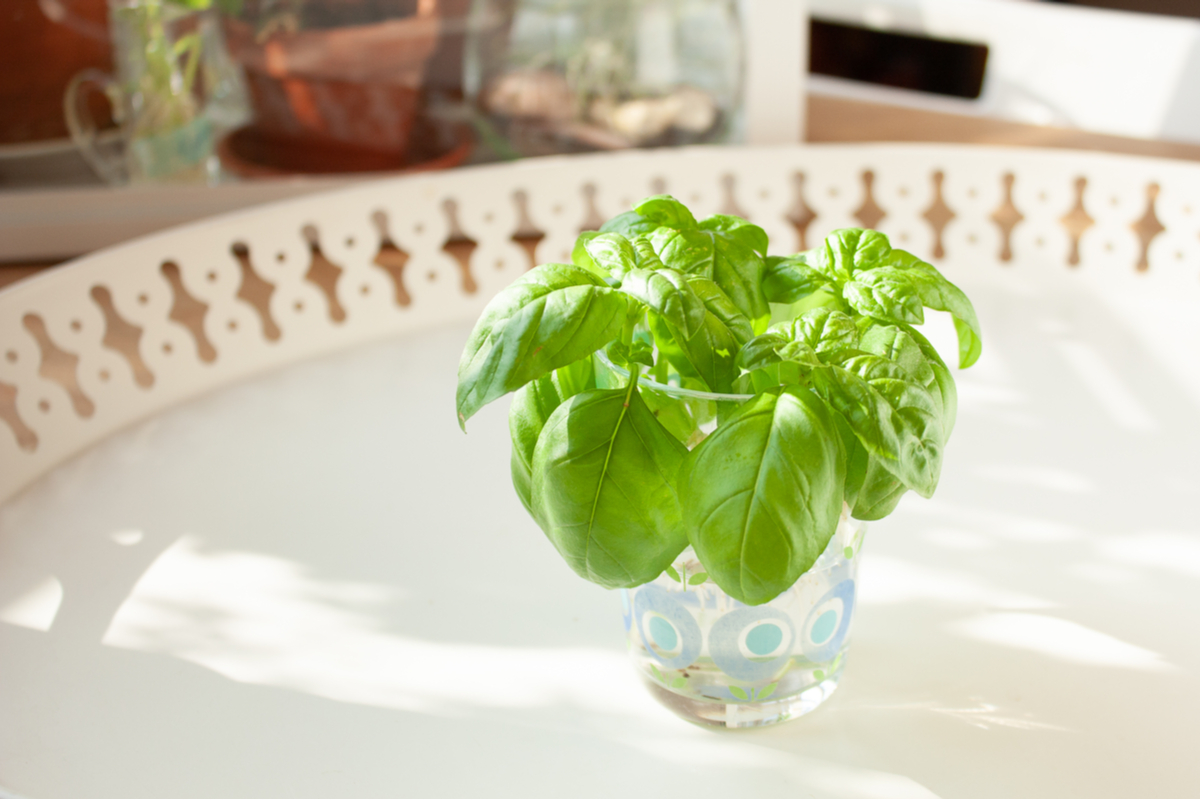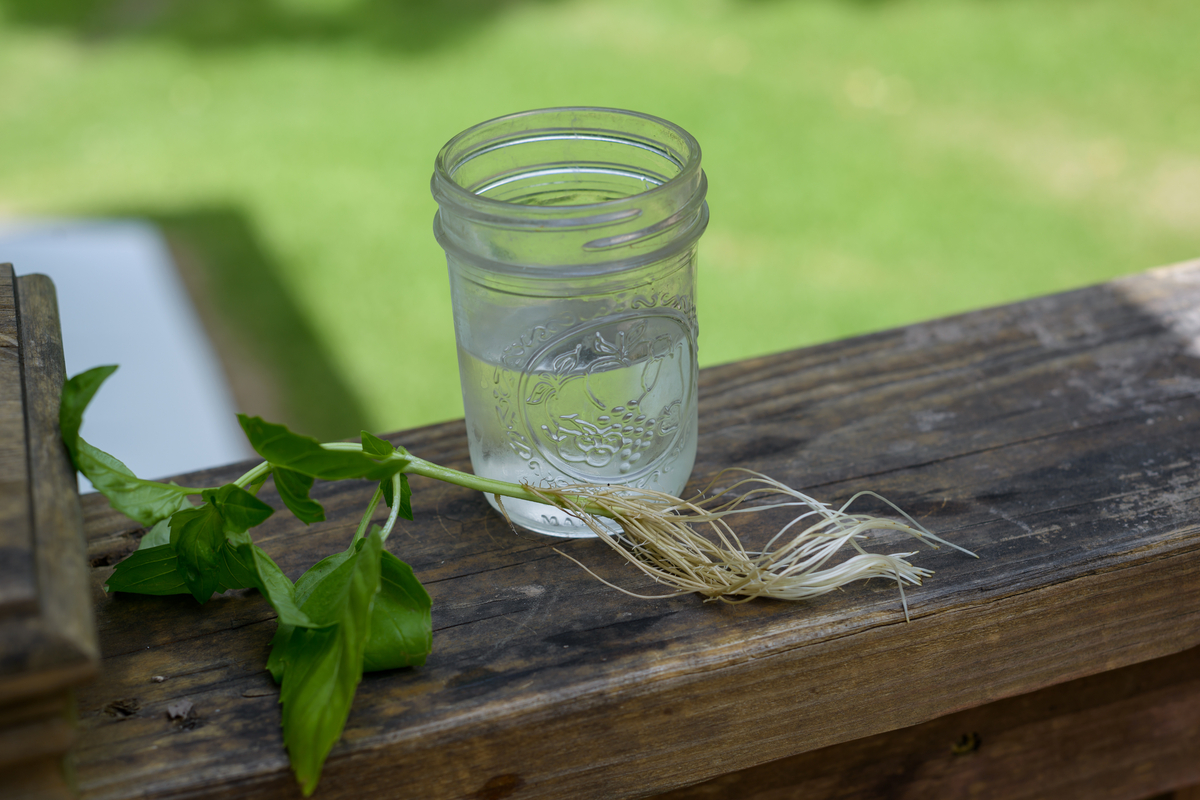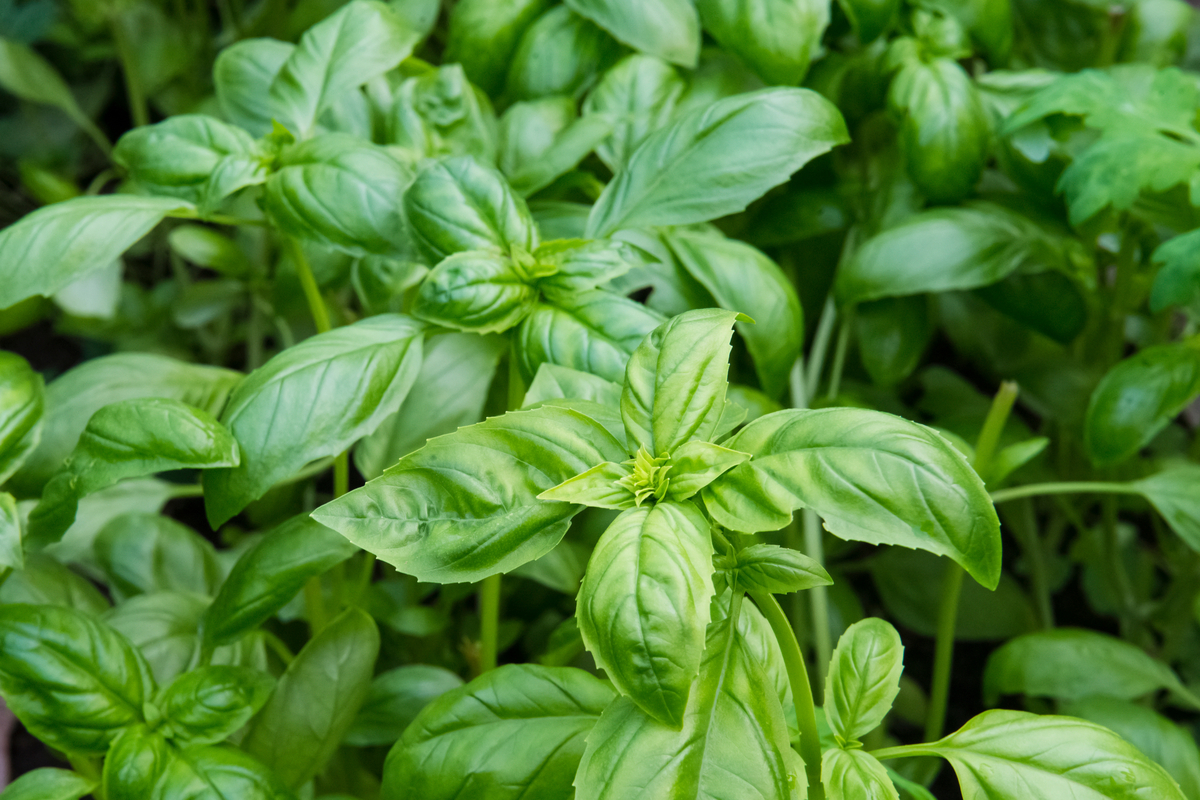Do you know How To Propagate Basil? The basil plant is a herb native to India. However, it has become a staple in Italian cooking and is also commonly grown in home gardens. Basil leaves are often added to salads or tossed into pasta dishes.
Basil plants are very easy to care for. They require little water and thrive in warm weather. In addition, they are pest resistant and produce abundant flowers.
Basil can be propagated by seed, cuttings, or division. Seeds germinate best if planted directly in the garden after the last frost date.
If you live in a colder climate, start seeds indoors about 6 weeks before your last spring frost date.

Basil seeds should be sown on moistened peat moss in flats or pots that have been misted with water. Keep the soil moist but not saturated.
When the seedlings emerge, thin them so that there is at least 1 inch between each seedling. Basil requires full sun exposure.
However, if you wish to propagate basil from cuttings, then carry on reading!
How To Propagate Basil In Soil?
What You Will Need
- Basil plants should be planted in a potting medium. You can use soil, peat moss, vermiculite, perlite, sand, or even sphagnum moss. Soil-less potting mixes are used to grow plants indoors without soil. Perlite is an inert material that helps retain moisture in pots. Vermiculite is a mineral that absorbs water.
- A sharp knife or kitchen scissors are needed to cut off the stem of the basil plant.
- A pot to place the potting medium and cutting in. It should be large enough that there is room for any developing roots to grow!
- (Optional) Rooting hormones help roots grow into the soil.
- Basil cuttings/A basil plant. You should get either Thai basil or Genovese basil. Both of these are easy-to-grow plants. If you want to try other varieties, make sure to pick a nice long stem and remove it just below the last leaf nodes.
Step 1: Get A Hold Of Some Basil
Basil is a herb used in cooking. To grow basil, cut off some healthy, nonflowering sprigs. Cut them off at about 6 inches long.
Take cuttings anytime during the growing season, but best when they’re getting cold and the stems are starting to get woody on the ends.
Fresh basil is an easy herb to grow. You can buy it at your local grocery store or farmer’s market. A cutting from a restaurant (which you can readily buy) is usually a decent length already.
Cutting below the last leaf node is okay if you’ve still got at least 3″ of stem after you cut. Cutting 4″ or more of the stem is even better!
Step 2: Strip Leaves Off The Bottom Of The Basil Sprig
Cut the tips of the stems at an angle of 45 degrees. This will expose more surface area to the center of the plant.
You can store the sprig in your fridge, wrapped up in a plastic bag.
Step 3: [Optional] Dip The Stem Into A Growth Hormone
![Step 3: [Optional] Dip The Stem Into A Growth Hormone](https://gardencomposer.com/wp-content/uploads/2024/05/Step-3_-Optional-Dip-The-Stem-Into-A-Growth-Hormone.jpg)
Basil roots grow quickly when dipped into a growth hormone. You can buy the powder or gel form of the hormone at your local garden store. Basil grows fast and healthy when using a growth hormone.
Step 4: Start The Root Structure
Planting your seedlings in pots is the easiest way to grow them. You should use a potting soil mix, and make sure that the roots have good drainage.
Plant them in a sunny spot, but avoid direct sunlight. Water regularly until they sprout.
Basil plants need to be planted in the soil first. You can put them in a glass of water with the stem submerged. Roots will grow after a few weeks.
Basil plants should be planted after the soil reaches 70 degrees Fahrenheit. Basil plants thrive in cool temperatures.
Step 5: Wait Weeks For The Maturing Plant
Basil plants need a lot of sunlight to grow properly. You should place them in a sunny spot. If you’re going to grow indoors, make sure that you put a plastic bag over the pot.
This will help retain moisture and keep the temperature constant.
Transplant shock is when a plant doesn’t know what to do with new surroundings. In this case, the plant needs to grow new leaves.
Simply cut off the old ones and let them dry out. This process takes about two weeks.
Step 6: Care For Your New Basil Plant
Basil plants need lots of light, water, and care. They should get plenty of sunlight and be watered regularly.
Basil plants grow well in pots or in the garden. You should water them regularly. Eventually, the basil plant may need to be planted in the ground.
Step 7: Pot Up The Rooted Cuttings
Basil plants should be planted in pots or containers with fresh potting soil, and covered with soil. Basil plants should be watered regularly until they start producing leaves.
Basil plants need sunlight to thrive. You should pin them up to allow for air circulation. Don’t let your basil get too dry.
How To Propagate Basil In Water?

If you don’t wish to propagate a basil plant in soil, you can also do a slightly adapted version in a water format!
Step 1: Create Cuttings
Cut below a leaf node to make cuttings. You should cut the stems cleanly just below a node at a 45°angle.
Step 2: Place Cuttings Into Jars Or Glasses With Water
Cuttings should be placed in water as soon as possible after being taken from the plant. This helps the plant grow new roots and shoots.
Cuttings need direct sunlight to grow properly. If they get too much sun, they might burn. You can also use them as decoration.
Step 3: Optional Pebbles
You can always add some pebbles to your jars – this will make the growing process more appealing, and will make it appear more like a decorative feature rather than a growing process!
Step 4: Keep Water Fresh
Since this growing process can take quite some time, you will need to keep an eye on how fresh the water is.
If it starts to look cloudy, stale, or develops a strange smell, you should change the water. This will help the basil cutting have as healthy a start as possible.
Step 5: Growing Roots
The roots should start to form after about 5 to 7 days. The best planting time is within 14 to 21 days of it being placed in the water.
Step 6: Planting Your Cuttings
Put the cuttings into the potting mix and good-sized pots – make sure these pots have adequate drainage holes.
Cuttings should be pampered for the first few days after planting. Keep them protected from direct sunlight and water well.
Planting Propagated Basil In Your Garden

Transplanting basil requires patience. You need to wait until the last frost date in your region. Basil needs full sun, but not too much heat.
Keep the soil moist, but not wet. Don’t let the soil get too dry or else the roots won’t grow properly.
Basil plants need sunlight and water to thrive. They should be planted in clean soil that isn’t treated with pesticides.
Cuttings should be placed in the ground about 8 inches apart. Basil grows up to about 12 to 20 inches tall.
You can also transplant your basil cutting into a large outdoor garden. Your pot should have several holes to drain water and be placed in full sunlight.
Water regularly to keep moist. Keep your basil plants in temperatures between 65 °F (18 °C) and 75 °F (23 °C). Cold temperatures will cause the leaves to wilt.
Organic fertilizers are safe for indoor plants. You should fertilize your basil plants once every two weeks.
To Sum Up
Propagating basil is simple. All you need to know is how to take cuttings from your basil plant. The process involves pruning the stems of your basil plant.
Once the cuttings have been taken, you’ll need to place them in a container where they can root. Then, you’ll need to plant the cuttings outdoors.
Frequently Asked Questions
What’s The Difference Between Seedlings And Cuttings?
Seedlings are small plants that sprout from a seed. Plants that come from seeds usually take longer to grow than those that are propagated using cuttings.
Cuttings are pieces of stem that are removed from a larger plant. These pieces are then placed in a rooting medium. When the cuttings begin to root, they’re ready to be transplanted.
When Should I Transplant My Basil?
If you want to grow healthy basil plants, you must wait until the last frost dates in your area. Basil plants don’t like cold temperatures, so they won’t survive outside during winter.
If you live in a warmer climate, you can start your basil seeds indoors before planting them out. This way, you can enjoy fresh herbs all year round.
What Are The Benefits Of Propagating Your Own Basil?
Growing your own basil is a great idea. You will always have it to hand in your home, which allows you to eat it or put it into dishes whenever you like.
Basil is also a medicinal herb that helps to treat various ailments (which is handy to have in your home).
It contains many nutrients, and, importantly, it smells nice! Finally, fruit flies hate basil, and it keeps them away from your kitchen/garden.
Editor’s Recommendations
26 Different Types Of Greek Veggies
Lean, Mean, and Dark Green: 15 Different Types Of Dark Green Veggies







